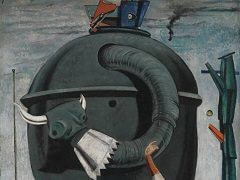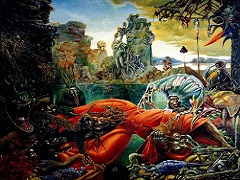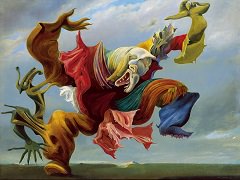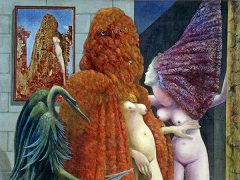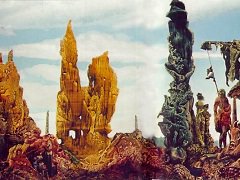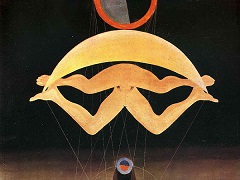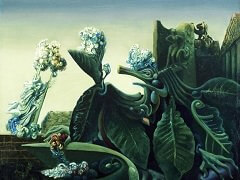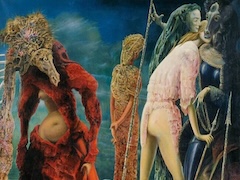The Eye of Silence, 1943 - by Max Ernst
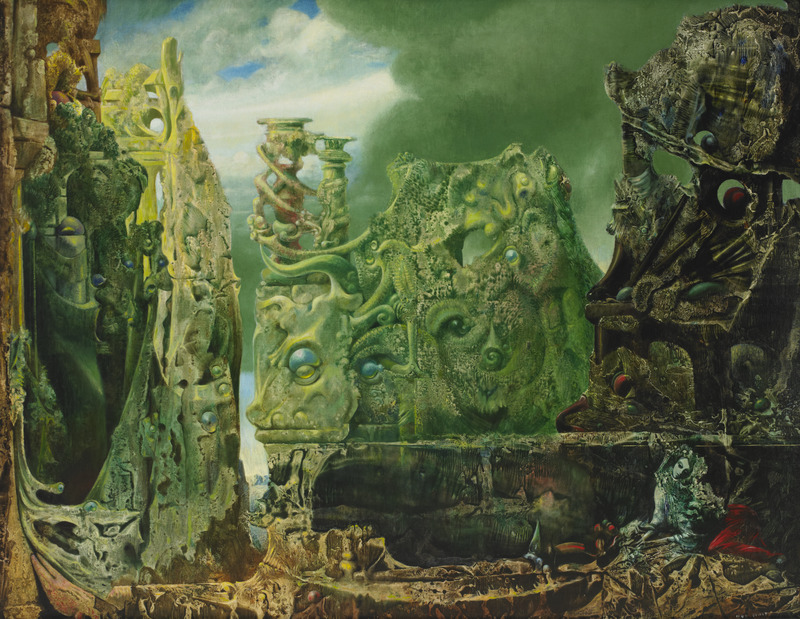
The Eye of Silence is a view of what appears to be a calm, reflective lake surrounded by green and brown shapes that simultaneously suggest foliage, stone ruins, and natural rock formations. In the right foreground sits a sphinx-like human figure; the background sky is filled with dark, ominous clouds. Marked by a frozen, poetic, even eerie sensibility, Ernst's painting is meant to be not direct or literal but provocative and suggestive, inciting investigation of symbols, imagery, and emotions stored in the human psyche that the imagery evokes.
Ernst was one of the first artists to apply The Interpretation of Dreams by Sigmund Freud to investigate his deep psyche in order to explore the source of his own creativity. The pervading artistic strategy in Max Ernst's oeuvre is to recycle visual material and combine it into new imageries. While turning inwards unto himself, Ernst was also tapping into the universal unconscious with its common dream imagery.

